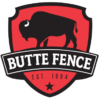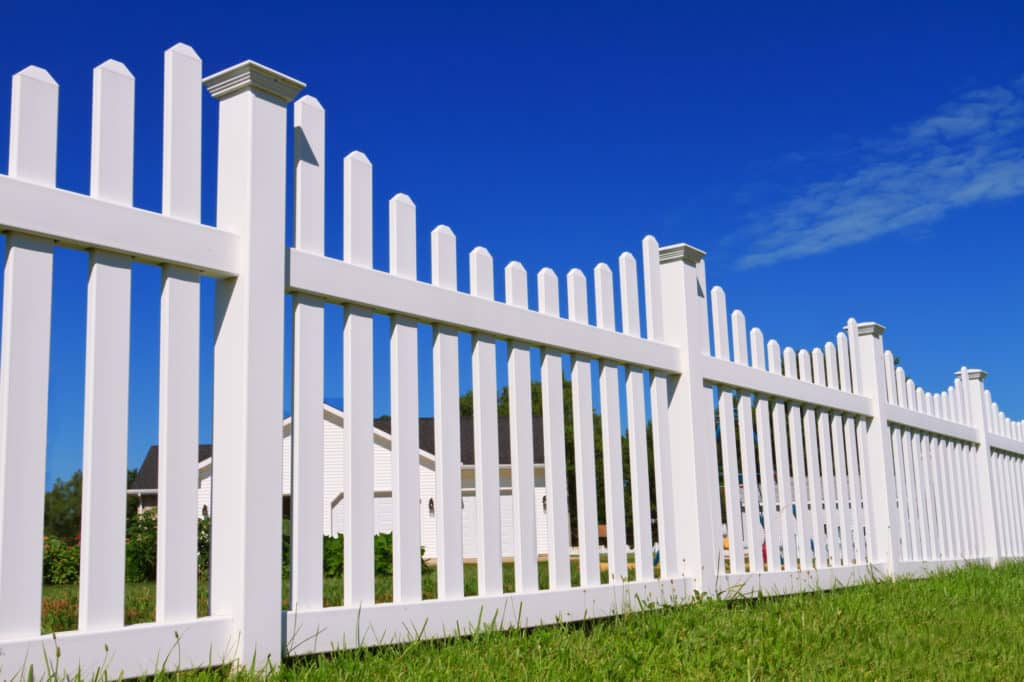Your home is your oasis. At the end of a long day, you love nothing more than stepping out onto your patio or your deck and settling in to enjoy the view of your backyard.
There’s just one problem: your backyard also stares straight into the neighbor’s dining room. Or your dog refuses to stay in the yard, getting into trouble with the neighbors or other dogs. Or your kids refuse to stay put, and you have to spend all your time making sure they don’t wander. Or your neighbors like to throw parties and every conversation carries into your backyard.
Sound familiar?
If so, it’s high time to invest in a fence. It can provide you the security and privacy you crave, plus several aesthetic benefits too. The key is knowing what type of fence you’re looking for. Our Idaho fence experts have compiled a complete guide to choosing the perfect fence for your yard, no matter what your needs may be.
Before You Get Started
Before you start shopping for a fence or thinking about materials, it helps to get a few details ironed out first. This will help ensure that you pick the right fence for you and your family.
Figure Out Your Needs
Start by asking yourself a few questions. For example: why do you actually want a fence?
It sounds like a basic question, but there are actually quite a lot of different fences, each serving their own unique purpose. If you don’t know what you want from a fence, you won’t be able to find a fence that you like no matter how hard you look.
For example, do you want a fence to provide some privacy from your nosy neighbors? Do you want a fence for decoration? Do you want a fence so that you can let your dog out in the backyard without fear they’ll run for the hills? Do you want a fence to slow down your wandering kids? Do you want a fence to keep farm animals in?
Each of these questions leads to a completely different fence. An ornamental fence, for example, is poorly suited to keeping a dog in and even worse for keeping farm animals contained (especially if you have animals that are good jumpers, like horses). Similarly, a fence that works to keep your dog contained may not offer enough privacy from the neighbors.
Think about why you want a fence and you’ll be able to narrow your options considerably.
Choose the Best Fence for Your Yard
The next step is to assess your yard, as this will be one of the biggest factors in deciding the overall cost of your fence.
For example, take a look at how big your yard is. If you have a large yard and you want fencing around all of it, you’re going to pay more simply because you need more materials to cover that much surface area.
If your yard is less of a flat surface situation and more of a rolling hilltops situation, you’re going to pay more for labor, as your fencing contractor will have to do a lot more work to adapt the fence for your hills.
Also, see if you have any oddball features that your contractors will have to work around. The perimeter where you want your fence is the most important area, but you should also pay attention to the immediate vicinity, as your contractor may need to dig to install a fence. A pond translates to wet, unstable ground, while a tree means you have to work around roots.
Privacy
Another key question is whether or not you want your fence to provide privacy.
A privacy fence is exactly what the name implies–a fence designed to shield your yard from view. To be clear, a privacy fence can also serve other purposes, like keeping pets contained or ornamenting a yard. It can also be made of several different materials.
However, all privacy fences function as a wall between your yard and the outside. If you like having that field of view, you probably won’t like introducing a privacy fence into the equation.
Don’t Forget Pets
If you have any pets, don’t forget to factor them into your fencing calculus.
As a pet owner, this may already be a part of your considerations. If you have a dog, for example, you may be looking for a fence so that they can play in the yard and you won’t have to worry about them running away.
That said, you have to pay attention to the type of animal you have and what flavor of escape artist they are.
A dog that jumps, for example, needs a fence that’s high enough to stop them from clearing it (or thinking about trying). You’ll also have to consider hills to ensure that your dog can’t jump the fence from the right angle. On the other hand, if your dog is a digger, a high fence won’t do any good–you need a fence that extends a few feet belowground.
Check with Your HOA
Unfortunately, not every feature of your fence is within your control.
Before you call a contractor and look at material estimates, make sure to check with your homeowners’ association, if you have one. Many homeowners’ associations place restrictions on the types of fences allowed in a neighborhood to ensure uniform curb appeal.
For example, your HOA may not allow a fence that’s tall enough to keep your high-flying dog contained. They may not allow fences of a certain material either, like chain-link fences, in order to keep up the aesthetic of the neighborhood. There may even be rules about ornamental fences, depending on the type of fence you’re looking for.
The point is: check with your homeowners’ association first. You don’t want to go through the hassle of calling contractors only to be penalized for putting up a fence you weren’t actually allowed to install.
Fence Styles
If you know what you need from a fence and you’re in the clear to install it, you’re ready to turn your attention to the fun parts of the process. Like the style of fence you want to have in your yard.
There are tons of styles of fence you can choose from, many of which are defined by their function just as much as their structure. A farm fence, for example, has to be tall enough and sturdy enough to keep animals contained.
Also, make sure to check with your fencing contractor if you have your heart set on a particular fencing style. The contractor may not have the materials or expertise necessary to build the fence you want, in which case your money is better spent elsewhere.
Here are a few styles of fence that our expert contractors at Butte Fence install.
Picket Fence
Ah, the all American image of a house with a white picket fence, a dog, and 2.5 kids.
Seriously though, a picket fence (white or otherwise) offers a serious boost to your curb appeal (the first impression your house makes from the street, which helps its resale value).
Plus, the picket fences of today are surprisingly hardy. They can be made of wood, which offers a classic, timeless appeal, or you can use vinyl or PVC, which is cheaper but more than capable of holding its own against the weather Idaho throws its way.
Privacy Fence
Some picket fences can double as privacy fences, or at least semi-privacy fences. That said, as a whole, privacy fences tend to be more opaque.
Generally, privacy fences are either a solid barrier of material or an almost complete barrier, with little to no space between the materials to block the view of your yard. This also means that privacy fences require more materials than other fences, so be prepared to shell out a bit extra.
Privacy fences, by design, also rule out certain materials. Chain-link fences and privacy fences are two completely different beasts. If you want a chain-link fence, you aren’t going to have a privacy fence. That’s all there is to it.
Ornamental Fence
Ornamental fences are a fun fencing option because the whole idea is to look good. This means that you can have a lot of fun with your fencing choices.
Wrought iron fences are a popular option in this category because they’re sturdy fences that can survive quite a bit of wear and tear while looking good. They’re one of the classic fence options, recalling bygone eras and instilling your yard with an aura of elegance.
Of course, you can also get ornamental fences in another material–the choice is yours.
A word of warning, though it should be obvious: ornamental fences are, well, ornamental. If you need a functional fence, i.e. a fence that keeps animals in or visitors out, don’t get an ornamental fence. And if you’re buying a fence to drape climbing vines, don’t rely on that fence to also keep your dog contained. It’s not built for that.
Ranch Rail Fence
Ranch rail fences are a type of functional fence and is considered one of the traditional fence styles for horses. For this reason, these types of fences are commonly seen on horse ranches.
The fence style is characterized by posts with three or four rails connecting each post. The posts and rails may be made of PVC, vinyl, or wood, though wood is the hardiest option.
However, all ranch rail fences designed for horses are quite tall. Horses are natural jumpers, and while the fences may not be high enough to keep the most talented jumper contained, they’re usually enough to deter most horses from going through the effort of sailing to the other side.
Farm Fence
Farm fences are similar to ranch fences, but they’re a broader fence category. These kinds of fences can be used to contain any sort of farm animal, from cows to pigs to sheep.
For this reason, farm fences may not be as tall as ranch fences, depending on whether or not they’re designed to pen horses or not. They may have chicken wire installed as part of the fence in order to keep animals from reaching through the fence.
However, like ranch fences, farm fences are much hardier than fences you would typically see in a neighborhood. They have to withstand the wear and tear that farm animals inevitably bring, especially if those animals aren’t that keen to stay on the right side of the fence.
Types of Fencing Material
Each style of fence offers several different material options, depending on what you want the fence to do and how you want it to look.
Keep in mind that you have to counterbalance cost-effectiveness with appearance and function. A stone fence, for example, might look lovely to keep horses in, but it’s way more expensive than wood or PVC ranch fencing. Plus, it’s much easier for a horse to hurt itself on a stone fence.
On the other hand, a chain-link fence may be effective at keeping a dog in the yard, but it doesn’t have the classic curb appeal of a wood fence. It also doesn’t block your dog’s line of sight, which means they can still bark with abandon.
Here are a few of the fence materials we work with and how you know if a given material is the right fit for you.
Wood Fence
Wood has been America’s favorite fencing material for 400 years. We put up a whopping 59,000 miles of it in 2007–enough fencing to circle the globe twice.
Wood fencing has long been a popular option because it’s classic. It’s one of the best-looking materials there is, and every wood fence is slightly different than the next thanks to the unique character of the wood. Plus, different types of wood can give you very different fences, even if you use exactly the same style of fence.
Make sure to ask your fencing contractor about the types of wood they have on hand. At Butte Fence, our standard wood fence is dogear cedar, which can be upgraded with steel posts for a longer-lasting fence.
Plus, if you want the look of your wood fence slightly altered from the original wood, you can get the wood stained for a cost-effective, highly attractive fence.
Iron
Iron is one of the toughest fencing materials in general and wrought iron fences have a clean, classic, elegant appearance that’s hard to beat. If you want a lovely ornamental fence to complement your garden, iron is a fantastic choice.
In addition, many wrought iron fences are manufactured in panels, which makes them easier to install.
In the old days, only the wealthy could afford wrought (i.e. handcrafted) metal fences for fine townhouses and country homes. This is part of why wrought iron fences have a reputation for elegance–they’re historically associated with wealth and class. These days, though, metal fences are much more affordable to the average buyer.
Keep in mind, though, that most metal fences don’t offer a ton of privacy, though they can be quite effective at keeping people out. They’re designed to look good, not hide your yard from onlookers.
Rock and Stone
Of all the materials on this list, rock and stone fences are among the most expensive fencing options simply because of the higher material cost. You’ll need a lot more stone to create the fence and the type of stone itself can be quite expensive. Plus, labor costs are often higher since you’re going to need a larger crew to manage the weight.
You can build your own stone wall, but if you want something that looks good and lasts for many years, it’s better to hire a contractor. They know how to work with stone and they have the equipment necessary to move stone easily.
At Butte Fence, we offer cost-effective SimTek fences that offer a beautiful stone appearance without the cost of installing actual stone.
PVC
PVC fencing is made of the same plastic used to create white plastic plumbing pipes. It’s one of the most cost-effective fencing materials currently available on the market.
The nice thing about the PVC fences of today is that they’re highly customizable. The original PVC fences were shiny white plastic panels, bright and not at all natural-looking. These days, PVC fencing can come in almost any color you want, in almost any style you want. You can even get PVC fencing styled to look like wood, without the cost of real wood.
This is why PVC fences are so popular among homeowners. They offer you the chance to get exactly what you want from a fence (without breaking the bank).
Chain-Link
Last but not least is chain-link fencing, which is one of the most common types of fencing on the market.
Chain-link fences are popular in large part because they’re so economical. They’re actually one of the cheapest fencing options on the market, and they’re quite effective at keeping dogs in. They’re also quite popular as a security fence for homeowners who want a cost-effective protection option.
At Butte Fence, we offer a few options for chain-link fences. If you want a less industrialized look, colored chain-link fences can help break up the harsh metal. If you’re looking for a chain-link fence that offers privacy along with cost-effective fencing, we can install slats to keep your yard out of sight.
Factors Affecting the Cost of an Idaho Fence
When you call your contractor and ask about the price, keep in mind that several factors will affect your quote, and not all of them can be accounted for over the phone. If a contractor gives you a quote without looking at your yard, they’re not accounting for a huge array of variables that will change the price once work begins.
Your Yard
Your yard is the biggest variable, which is why your contractor needs to actually see the yard before they give you a reasonably accurate quote.
Once your contractor sees the yard, they can walk you through various features that will make the fence easier or difficult to install. Hills or stepped areas, for example, mean that you can’t use flat panels for installation.
If your property line has a tree situated squarely in the middle of it, your contractor will have to account for that, either by going around the tree or tearing it up. This can get quite expensive if you have a huge, old tree with an extensive root system, and you may need permission from your neighbors to loop around the tree into their property line.
Your Materials
Your materials are the second biggest factor in the cost of your fence.
At Butte Fence, we’re proud to provide beautiful and cost-effective fencing options to our customers. You’ll get the beauty of an expensive fence without paying a project price that’s completely outside your budget.
Talk to your contractor about how much it would cost to work with various materials in your yard. Certain materials are more forgiving of uneven terrain than others, so keep this in mind when you talk about pricing.
Looking for an Idaho Fence Contractor? Butte Fence Can Help!
If you’re in the market for an expert Idaho fence contractor, we’re here to help. From our humble beginnings in 1994, we’ve grown to be one of the largest vinyl fence companies in the west.
But most of all, we take our job (creating a fence you’re proud to call your own for years to come) very seriously. We put our customers first and we always deliver outstanding quality, no matter what your project entails.
Ready to invest in the fence you’ve been dreaming of? Get in touch today to let us know how we can help!


